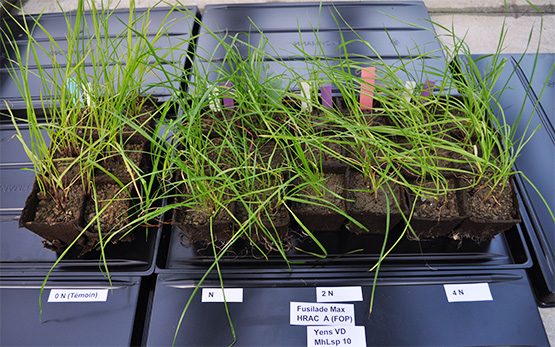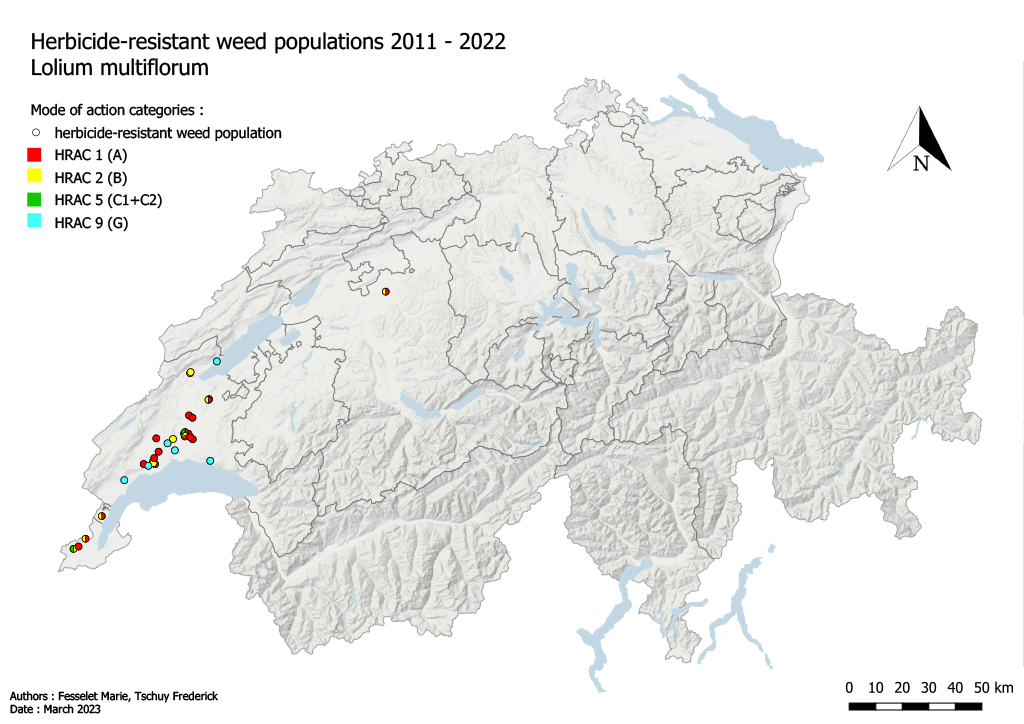For Italian ryegrass, four herbicide modes of action are affected by resistances, according to observations made since 2011.
In Italian ryegrass, single resistances have been confirmed for ACCase inhibitors (HRAC 1), ALS inhibitors (HRAC 2) and glyphosate (HRAC9).
Several cases of double resistance have been confirmed to date: double resistances to ACCase- (HRAC 1) and ALS inhibitors (HRAC 2), as well as to ALS- (HRAC 2) and photosystem II inhibitors (HRAC 5).
Several cases of triple resistance have also been analysed since 2016: triple resistances to ACCase inhibitors (HRAC 1), ALS inhibitors (HRAC 2) and photosystem II inhibitors (HRAC 5).
The first case of glyphosate resistance was discovered in 2013. In 2014, the first case of resistance to ACCase inhibitors (HRAC 1) was confirmed. The first Italian ryegrass population with a resistance to the ALS inhibitor (HRAC 2) was found in 2016. Each of these cases concerned the Canton of Vaud.








